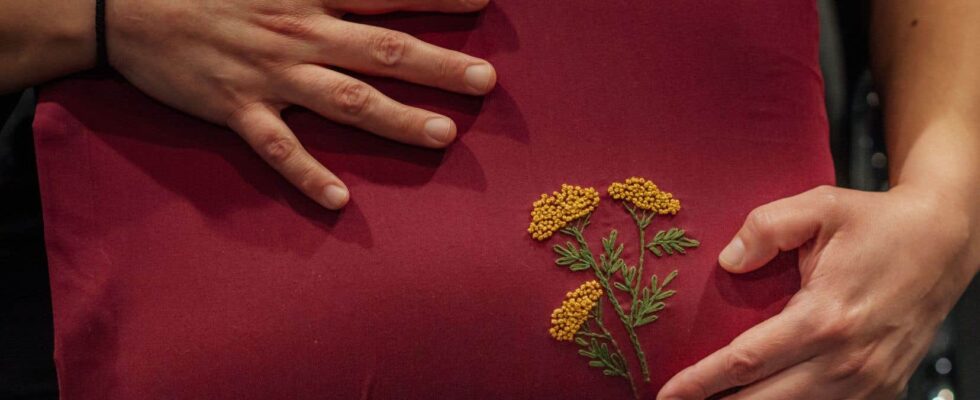The MAI (Montreal, intercultural arts) presented for the first time last week a show that uses vibrotactile pillows. These pillows make performances accessible to the deaf and hard of hearing community by transforming sounds into vibration.
With I will not flood the sea, presented at MAI from May 15 to 18, Mexican dancer and choreographer Sonia Bustos takes us into a multidisciplinary dance show where our five senses are engaged to tell the story of her grief linked to the deaths of her mother and grandmother . It was therefore only natural that an artistic proposal of this kind would make use of vibrotactile pillows, a first at MAI. They were developed by media artist David Bobier with inclusivity in mind and aimed primarily at the deaf and hard of hearing community. Deaf and hard of hearing spectators can thus perceive all the sounds of the show by holding the pillow to their body and feeling it vibrate. For Bustos, in addition to the concern for inclusiveness, having the pillows during his performances was a way of honoring one of his sources of artistic inspiration — his late grandmother — because she wore a hearing aid of hers. alive.
The artist began his performance with a dazzling dance to the disco sounds of I Feel Love by Donna Summers before taking us into the darkest trenches of her grief. She sobbed, she collapsed to the ground, she rolled in the dirt, but eventually she smiled again while dancing zapateado (a Mexican tap dance) and serving café de olla (a traditional Mexican coffee). ) enriched with tequila to the spectators seated in a square around the stage, all accompanied by a talented group of dancing musicians and the smell of flowers.
“I quickly realized that the five senses were very important to Sonia. And having live music really allows deaf people to be engaged with the instrument, then with the person who plays it,” says Claudia Parent, public engagement coordinator at MAI and responsible for programming that promotes accessibility to works and artists. It was a deaf employee of the MAI who made this observation. “She told us that with the instruments liveThat [changeait] All. Because [qu’avec une] recorded music [elle sentait] the vibrations, but [elle ne savait] not what is that [résonnait] », says Claudia Parent. “So, when we did tests […]she told us it was the first time [qu’elle sentait] such a strong connection with music. »
The show was slightly changed following these comments. Instead of starting to play at the same time, the musicians started playing one by one. “ [Notre employée sourde] said that if each instrument is introduced one at a time, [elle allait] being able to make the link between the vibration and the instrument,” explains Claudia Parent. The seats with the vibrotactile pillows are also positioned so that the spectators seated there have the best view of the instruments and the dancers tapping a rhythm with their feet.
Sonia Bustos believes that these modifications in no way violated her artistic vision. “I didn’t have to force it, because in fact, before, there was a scene where [le musicien qui joue] the leona (a type of mexican guitar) was exploring [seul] “, she explains. “So we already had [cette idée]. » The portion of the show canto cardenche (a type of lament sung a cappella from northern Mexico) also naturally accommodated. The musical arrangement that Bustos had created before he was offered to have the pillows during his performances had already provided for the singers to board one by one before singing together.
This first experience with shows accessible to people of diverse abilities allowed Bustos to become aware of the barriers these people experience and to learn about the different options that exist to reduce them. “As an artist, sometimes I tell myself that my project is not for everyone,” she explains. Just knowing that there are possibilities makes me think about my next creations. »
For his part, in addition to vibrotactile pillows, Parent advocates several initiatives at the MAI to make certain performances accessible to the deaf and hard of hearing community. She organized dance shows with very pronounced facial expressions with the presence of a deaf cultural mediator before and after the shows. “Often, we invited people for the first time to the discussions after the show. So, that already allowed them to have a discussion interpreted in ASL (American Sign Language) and LSQ (Quebec Sign Language), she explains. People could ask their questions. It really felt like being together where everyone could discuss their perspectives. »
For her, these efforts make “the difference between coming or not” to the performances for several people. “If you want people to come to your house, you have to be welcoming. We must consider people as a whole,” she concludes.
